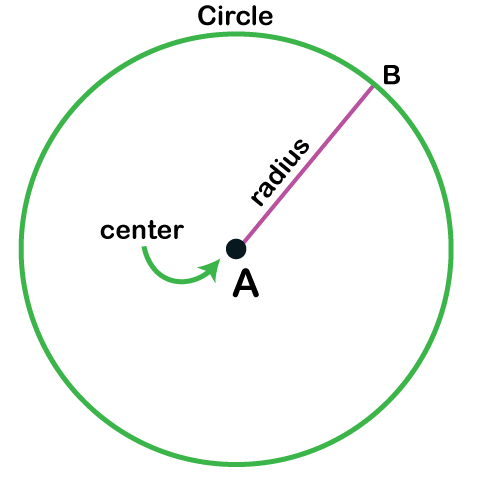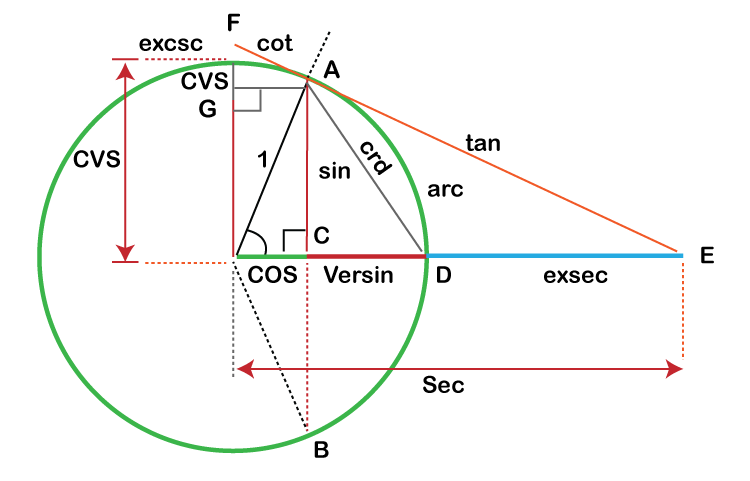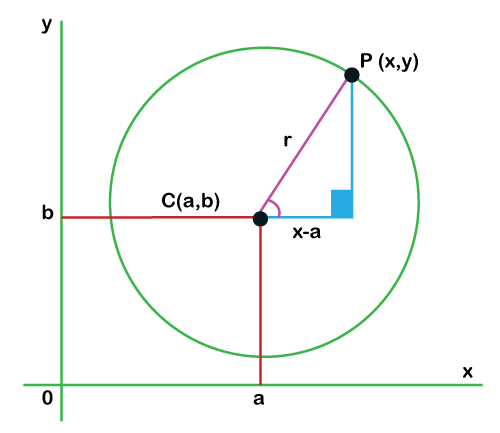Radius of a Circle DefinitionThe circle is one of the most fundamental geometric shapes in mathematics, with a wide range of applications in various fields such as engineering, physics, architecture, and more. Understanding the properties of a circle, and in particular, its radius, is crucial in many areas of mathematics, from geometry to calculus. In this article, we will explore the definition of the radius of a circle in different branches of mathematics, including classical geometry, trigonometry, and analytical geometry. We will also discuss the applications of the radius of a circle in various fields and examine its properties and relationships with other geometric concepts. Definition of Radius in Classical GeometryClassical geometry is a branch of mathematics that deals with the properties of geometric shapes in two or three-dimensional space. In classical geometry, we define a circle as a set of points in a plane at an equal distance from a fixed point, known as the center of the circle. The radius is the distance from the center to any point on the circle. 
Thus, the radius is a crucial element of a circle's definition in classical geometry, as it determines the circle's size, shape, and position. The diameter of a circle, which is twice the length of the radius, is equally important, as it represents the distance across the circle through the center. The circumference of a circle, on the other hand, is the distance around the circle. The radius of a circle has several properties that make it a fundamental concept in geometry. For example, all points on a circle are equidistant from the center, which means that the radius is perpendicular to the tangent line at any point on the circle. Moreover, the length of the radius is half the length of the diameter, and the circumference of a circle is equal to pi times the diameter or 2 times pi times the radius. Definition of Radius in TrigonometryTrigonometry is a branch of mathematics that studies the relationships between the sides and angles of a triangle. Trigonometry has many applications in fields such as physics, engineering, architecture, and astronomy, where it is used to model and analyse various phenomena. In trigonometry, the radius of a circle is defined as the distance from the centre of the circle to any point on the circle. This definition is similar to the definition of radius in classical geometry. However, in trigonometry, the radius is often used in the context of the unit circle, which is a circle centered at the origin of the coordinate plane with a radius of 1. 
The unit circle is used to define the trigonometric functions of angles. Specifically, if we consider an angle formed by a ray from the origin to a point on the unit circle and the positive x-axis, then the coordinates of the point on the unit circle can be expressed in terms of the trigonometric functions sine, cosine, and tangent. The sine of the angle represents the y-coordinate of the point, the cosine of the angle represents the x-coordinate of the point, and the tangent of the angle represents the slope of the line connecting the origin to the point. The radius of a circle is also used in the polar coordinates system, where the position of a point on the plane is described in terms of its distance from the origin (the radius) and its angle from the positive x-axis. The radius is a fundamental concept in trigonometry, as it is used to define trigonometric functions and to describe the positions of points on the unit circle. The study of the relationships between the angles and sides of triangles, which is the basis of trigonometry, relies heavily on the concept of the radius of a circle. Definition of Radius in Analytical GeometryAnalytical geometry, also known as coordinate geometry, combines algebra and geometry to study geometric objects using algebraic techniques. In analytical geometry, geometric figures such as curves, lines, points, and surfaces are represented using coordinates in a coordinate system. The equation of a circle in a Cartesian coordinate system can be written as: (x - a)^2 + (y - b)^2 = r^2 Where (a, b) are the coordinates of the centre of the circle, and r is the radius of the circle. This equation can be derived using the distance formula between two points. If (x, y) is any point on the circle, then the distance between that point and the centre (a, b) is: Sqrt((x - a)^2 + (y - b)^2) 
Since this distance is equal to the radius r, we can square both sides of the equation to get the equation of a circle in analytical geometry. The radius of a circle in analytical geometry is the distance from the centre of the circle to any point on the circle. It is a fundamental concept in analytical geometry and is used in many applications, such as determining the area and circumference of a circle, finding the intersection of two circles, and finding the equation of a tangent to a circle at a given point. Definition of Radius in AnalysisAnalysis, on the other hand, is a branch of mathematics that studies functions, limits, continuity, derivatives, integrals, and infinite series. It is concerned with the rigorous development and exploration of the concepts and techniques used in calculus. One of the main differences between the definition of a circle in analysis and other branches of mathematics is the level of rigor and precision involved. The analysis provides a rigorous framework for studying the properties and behavior of mathematical objects, such as circles, using formal definitions, axioms, and logical reasoning. This allows for a more precise and systematic study of circles and their properties, including their limits, continuity, derivatives, and integrals. For example, in analysis, the concept of a limit is used to define the properties of a circle as the radius approaches zero. This is known as the point circle, and it is defined as the limit of a sequence of circles with decreasing radii. The limit of the sequence of circles is a point, which is considered to be a circle of radius zero. This concept is used in the study of topology, which is a branch of mathematics that deals with the properties of space that are preserved under continuous transformations. Another difference between the definition of a circle in analysis and other branches of mathematics is the use of complex numbers. In complex analysis, circles are defined using complex numbers, which are numbers that have both a real and an imaginary part. This allows for the study of circles in the complex plane, which is a two-dimensional space that extends the real number line into the imaginary plane. Applications of Radius in Various FieldsThe radius of a circle has numerous applications in a variety of fields, from mathematics to engineering, architecture, physics, and more. Here are some examples of how the radius is used in different areas:
ConclusionIn summary, the radius is a fundamental property of a circle that plays a vital role in many areas of mathematics and science. Whether we are studying geometry, trigonometry, calculus, physics, or engineering, the radius is a crucial concept that helps us understand the fundamental properties of circular objects. By understanding the definition and applications of the radius, we can gain a deeper appreciation of the role that circles play in our world and how they are used in various fields.
Next TopicROM Definition
|
 For Videos Join Our Youtube Channel: Join Now
For Videos Join Our Youtube Channel: Join Now
Feedback
- Send your Feedback to [email protected]
Help Others, Please Share









